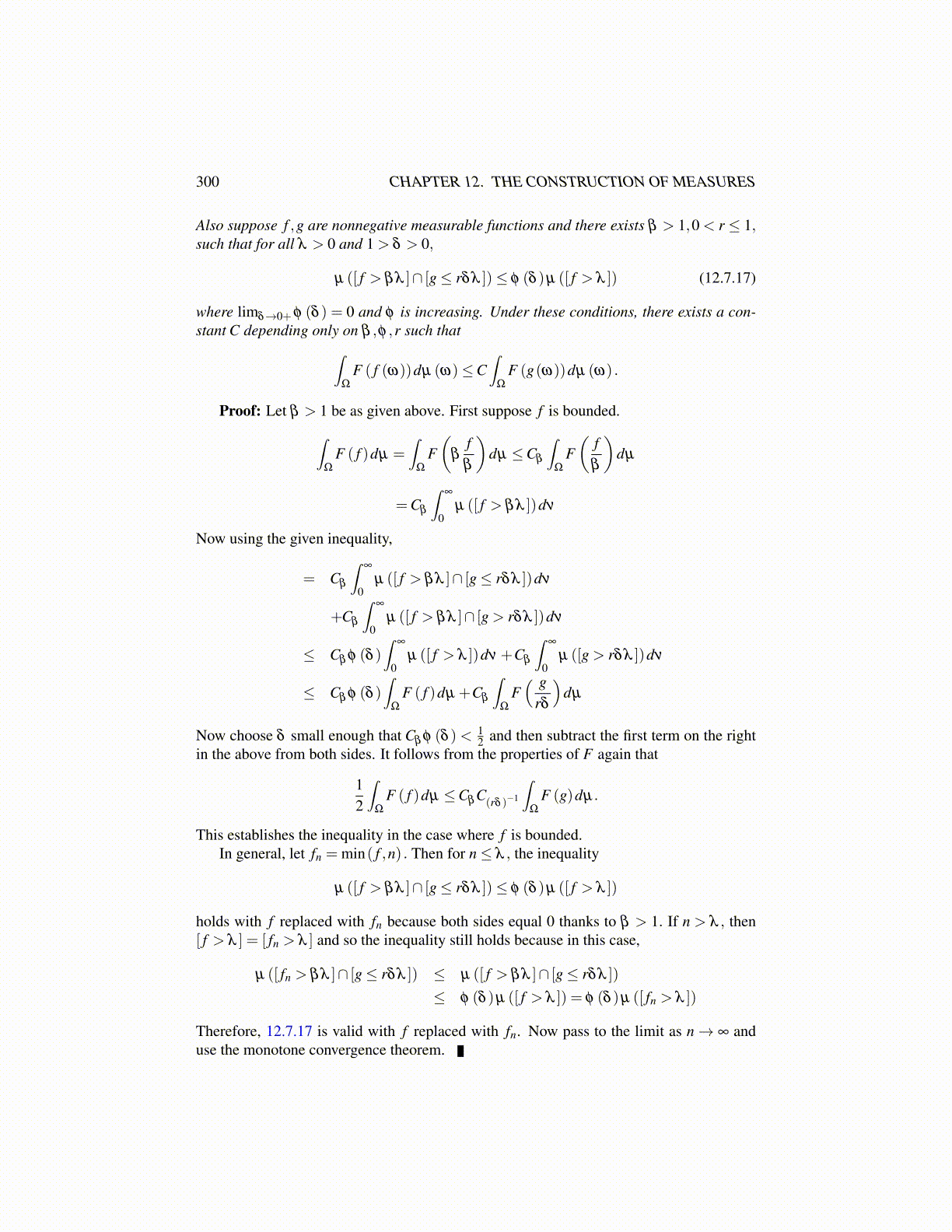
300 CHAPTER 12. THE CONSTRUCTION OF MEASURES
Also suppose f ,g are nonnegative measurable functions and there exists β > 1,0 < r ≤ 1,such that for all λ > 0 and 1 > δ > 0,
µ ([ f > βλ ]∩ [g≤ rδλ ])≤ φ (δ )µ ([ f > λ ]) (12.7.17)
where limδ→0+ φ (δ ) = 0 and φ is increasing. Under these conditions, there exists a con-stant C depending only on β ,φ ,r such that∫
Ω
F ( f (ω))dµ (ω)≤C∫
Ω
F (g(ω))dµ (ω) .
Proof: Let β > 1 be as given above. First suppose f is bounded.∫Ω
F ( f )dµ =∫
Ω
F(
βfβ
)dµ ≤Cβ
∫Ω
F(
fβ
)dµ
=Cβ
∫∞
0µ ([ f > βλ ])dν
Now using the given inequality,
= Cβ
∫∞
0µ ([ f > βλ ]∩ [g≤ rδλ ])dν
+Cβ
∫∞
0µ ([ f > βλ ]∩ [g > rδλ ])dν
≤ Cβ φ (δ )∫
∞
0µ ([ f > λ ])dν +Cβ
∫∞
0µ ([g > rδλ ])dν
≤ Cβ φ (δ )∫
Ω
F ( f )dµ +Cβ
∫Ω
F( g
rδ
)dµ
Now choose δ small enough that Cβ φ (δ )< 12 and then subtract the first term on the right
in the above from both sides. It follows from the properties of F again that
12
∫Ω
F ( f )dµ ≤CβC(rδ )−1
∫Ω
F (g)dµ.
This establishes the inequality in the case where f is bounded.In general, let fn = min( f ,n) . Then for n≤ λ , the inequality
µ ([ f > βλ ]∩ [g≤ rδλ ])≤ φ (δ )µ ([ f > λ ])
holds with f replaced with fn because both sides equal 0 thanks to β > 1. If n > λ , then[ f > λ ] = [ fn > λ ] and so the inequality still holds because in this case,
µ ([ fn > βλ ]∩ [g≤ rδλ ]) ≤ µ ([ f > βλ ]∩ [g≤ rδλ ])
≤ φ (δ )µ ([ f > λ ]) = φ (δ )µ ([ fn > λ ])
Therefore, 12.7.17 is valid with f replaced with fn. Now pass to the limit as n→ ∞ anduse the monotone convergence theorem.